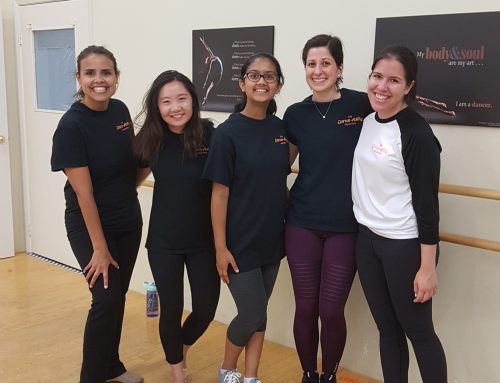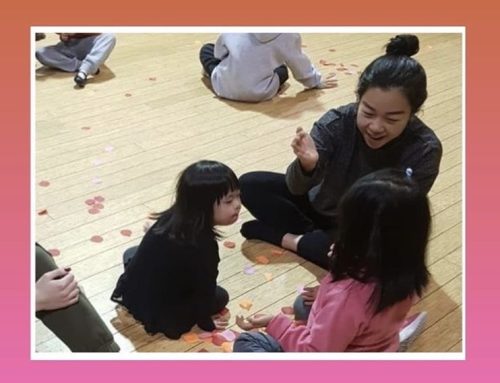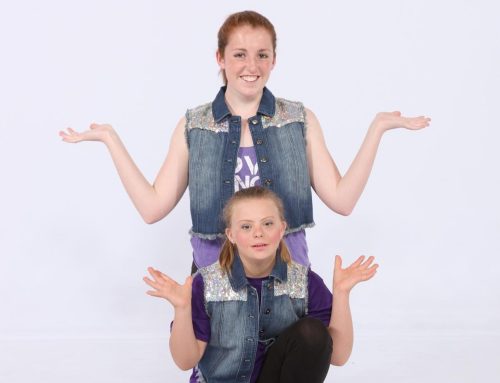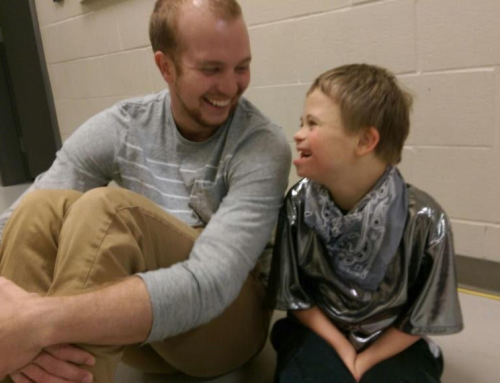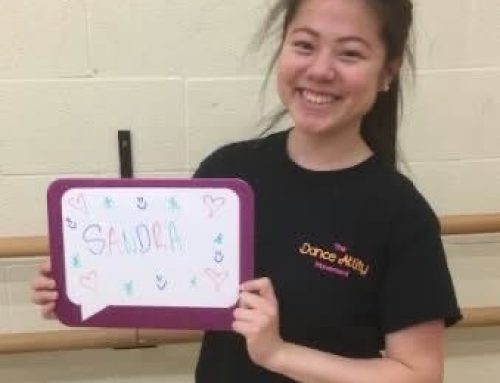We have invited Raven Brooks, student Occupational Therapist at the University of Toronto, to share some reflections about the dynamic roles the Dance Ability Movement OTs have based on her experience during her 10-week placement with us. Since Raven’s impressions covered diverse topics, we’ve decided to publish them in a series of blog posts.
In her last blog post, Raven will share with you how our OTs support our instructors and help us build an inclusive and bright community. If you haven’t read her previous blog posts, click on the links below:
- Supporting New Dancers through an individualized approach
- Supporting Classes using a Universal Design, and Targeted Team Approach
- Building the Capacity of Volunteers
 Much of what the OTs do to support the instructors is behind the scenes and really differs for each instructor/OT relationship. OT enablement skills from the Canadian Model of Client-centered Enablement such as coaching, educating and collaborating are important when OTs are working with instructors (Townsend & Polatajko, 2007).
Much of what the OTs do to support the instructors is behind the scenes and really differs for each instructor/OT relationship. OT enablement skills from the Canadian Model of Client-centered Enablement such as coaching, educating and collaborating are important when OTs are working with instructors (Townsend & Polatajko, 2007).
Here are some things that the DAM OTs do to support the instructors:
- Meet with instructors to share new dancers’ preferences, interests and strategies so they could best support new dancers.
- Help to manage and balance the expectations of instructors and families to ensure everyone’s expectations of the class are in alignment.
- Provide suggestions on how the instructor could grade a certain movement to provide a just-right level of challenge for the dancers.
- Give feedback on using inclusive language and how to cultivate a more inclusive dance class.
Coming into this placement, I did not expect that Jade and Mallory take their OT lens beyond just their dance classes. Sabrina and I have also had the pleasure of being involved in many conversations outside of dance classes where we have engaged with other stakeholders and advocacy initiatives. We completed a program evaluation and sought feedback from families to ensure the DAM maintains their family-centred approach program-wide.
Some things I was fortunate to experience with DAM being a community organization are:
- Participating in community dance workshops where the DAM demonstrates their incredible, inclusive environment to others and helps to facilitate their participation in dance.
- Attend meetings with other community organizations to expand the DAM network and provide more opportunities for individuals to experience an inclusive dance environment.
- Provide education for future Student OTs through sharing advice for pursuing unique areas of OT practice and program development, and demonstrating how evidence-based approaches such as family-centered care and participation-based approaches such as PREP (Law et al., 2016) can be implemented in unique community private practice settings.
Although you may not see everything the DAM OTs do, you see the end result of building an inclusive community of dancers. Through the OTs enablement skills including coaching, collaborating, educating, consulting, etc. used at the universal, targeted, and individual levels, DAM programming continues to improve to ensure everyone is supported. It was apparent that the DAM OTs are the core of this organization. I didn’t realize that my role would be so different in each class I was part of, and I think the versatility of the OT role at the DAM is what makes it so special. I am so lucky to have had the opportunity to learn from the amazing DAM OTs these last 10 weeks! Thanks to you, the DAM families and dancers, as well for welcoming me with open arms as a Student OT.
This learning experience has been so incredible and here are some key takeaways for me:
- The OT role is not as linear and straight-forward as I thought originally. The OT role really depends on who they are working with, the participation team that is involved and the working environment. Therefore, OTs need to be adaptable, flexible and have extensive collaboration skills.
- Meaningful participation is unique to each individual, and OTs ensure that the participation team is on the same page regarding what someone’s meaningful participation looks like to help manage the expectations of all involved (Anaby et al., 2021).
- Building an inclusive environment takes time and coaching but is so necessary to provide an environment where an individual feels like they belong and can engage in their occupation, whether this is dance or another activity.
Raven Brooks

